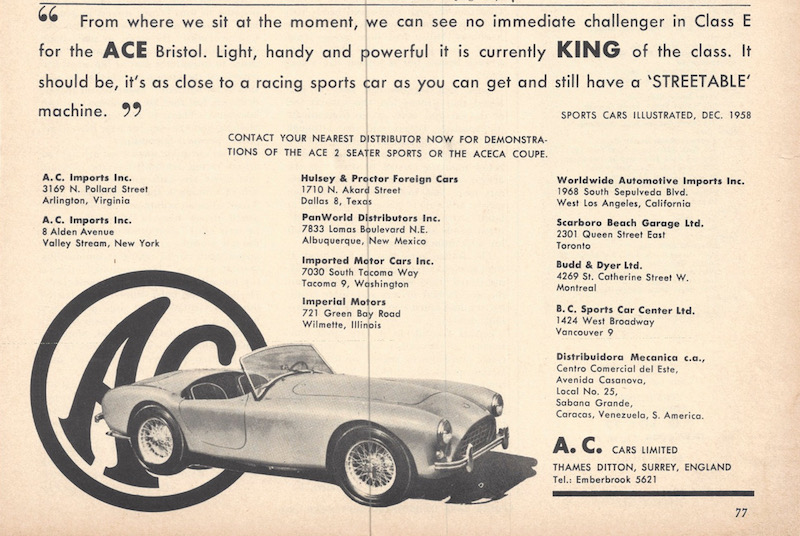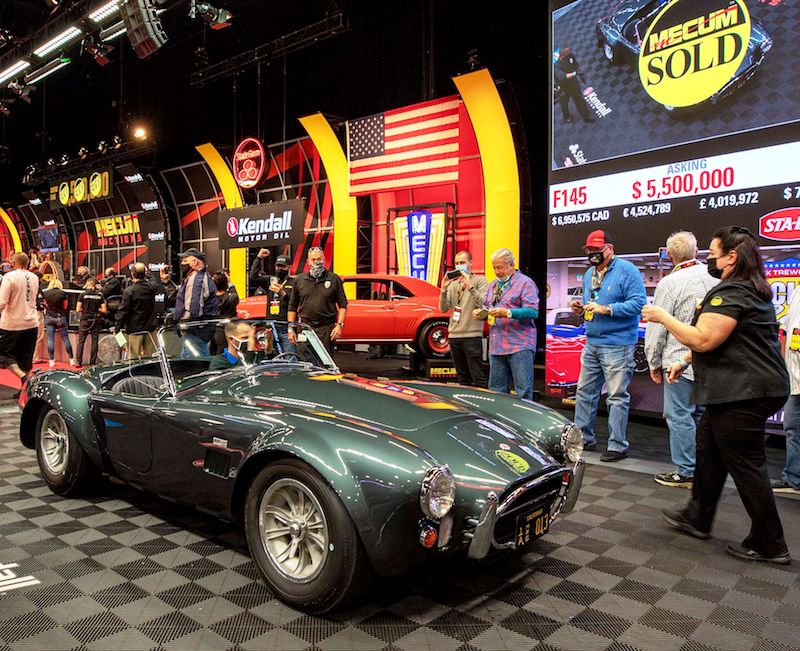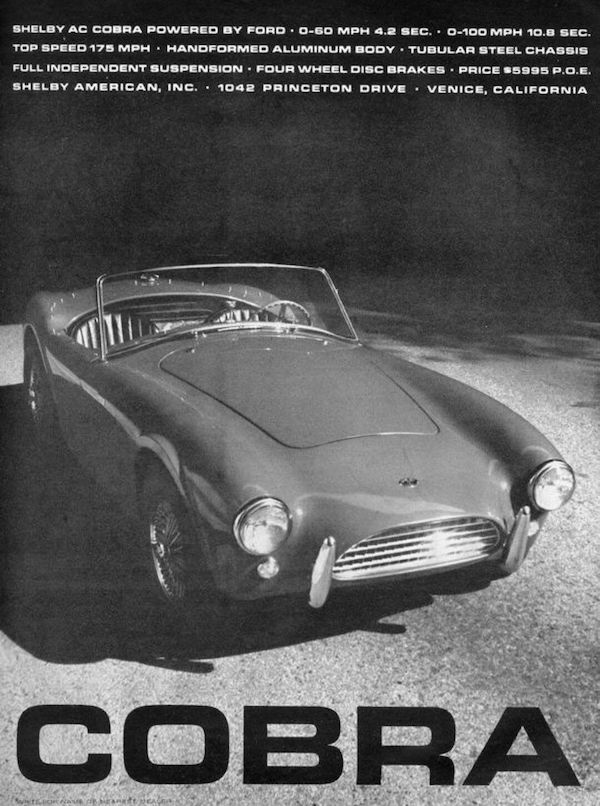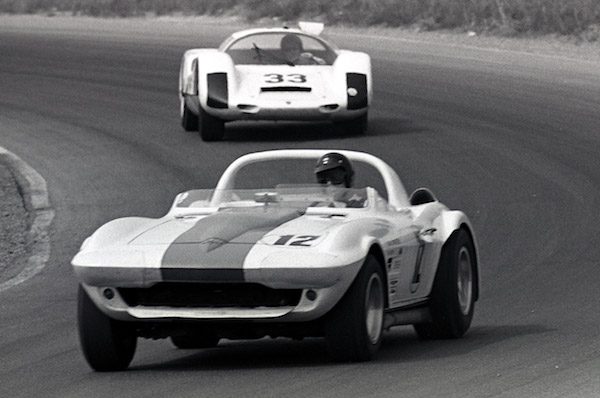Q: Greg, I love the Ford Shelby Cobra, which you could buy at a Ford dealer back in the mid-1960s. How many were actually built through 1968? I know Corvette built those Grand Sports to battle the Cobras, but they were race only. Any other info you can give on the Ford Cobra is appreciated as I read a lot about the Shelby Cobra and many times it’s different from what I thought. Danny, from St. Johns, Fla.
A: Danny, I’m happy to help, as there is much misinformation on the Shelby Cobra out there.
Carroll Shelby is the man behind the Cobra while Zora Arkus-Duntov built the Corvettes that would hopefully beat those Cobras at the racetrack. At the time this all happened, in early 1963, Shelby had Ford’s blessings while Duntov did not have the same support from Chevrolet, who dropped out of racing that same year.
Shelby started his dream when he made a deal with A.C. Cars in England to secure bodies for his soon to be born Ford AC Cobra. Here in the states we knew of the foreign AC car as an AC Bristol, although the later Bristol term would turn out to be untrue.
Shelby’s initial Cobra came to life in 1962, where he dominated road racing by trouncing the “always winning” A/Production Corvettes. Not to be outdone, Arkus-Duntov responded by building his Cobra destroyer, the 1963 Corvette Grand Sport, which was a lightweight ‘Vette with a special small block V8 under the hood. Duntov built these highly sophisticated Grand Sports specifically to beat Shelby.
Although I never saw any Corvette Grand Sports on the road, as they were race only, I did see several real Cobras back in the 1960s. I wouldn’t dare call one out back then with my ’67 GTX 440 or even my ’68 Camaro 396/375, as I knew of Cobra’s lightweight attributes and its 427 power combo was awesome.
Speaking further of power, Shelby’s Cobra offered small block Fords in either 260 or 289 cubic inches with up to 306 horses or the thundering 427 side oiler V8, listed at 425 horses but putting out near 475. As for Duntov’s Grand Sport, a stroked 377-inch small block fed by four Weber side draft carbs developed 485 horses, more than enough to outpace the Shelby Cobras in the Governor’s race at Nassau in December of 1963.

Early ad for the Shelby Cobra in the AC Ace body that was produced by AC Cars Ltd. in Thames Ditton, Surrey, England. (Ford)
Overall, Ford built only 654 small blocks and 350 or so big block AC style Cobras in the seven years of availability, and many were indeed for street use. In contrast, only five of Duntov’s Grand Sports were ever built, two of them converted to roadsters. These cars are priceless, and word has it GM wanted the cars destroyed along with the 1963 Daytona 500 427 Mystery Motor cars as the company was “officially out of racing” in 1963. Regardless of corporate edit, all five Grand Sports survived and exist in good hands today, two of them most recently with Roger Penske.
Now, to clear up all the misinformation, this is where a reader by the name of Al Isselhard, from Wolcott, N.Y., chipped in with some truly interesting Cobra history a few years ago.
He said that being the owner of an AC Bristol, he noted that Shelby bought more than AC bodies from AC Cars – he bought the entire car minus the engine and driveline. The model Shelby bought was an AC Ace, NOT an AC Bristol, to convert into his Cobra.
Bone stock AC Bristols were not nearly as fast as Corvettes, but it would be wrong to say Bristols were underpowered as they were very successful in their class in SCCA road races from 1957 to 1961.

The 427 Shelby Cobra debuted in 1965, and by the end of production in 1967 only 348 were ever built of which just 260 were street versions. Carroll Shelby’s personal 1965 427 Cobra sold for millions in 2021. Please read on to find out how much. (Mecum Auction)
So I thanked Isselhard, because to this day there is still much misinformation out there on the subject of AC Cobras. Isselhard then took the time, via email and on the phone, explaining for my readers what really happened in this fascinating Shelby Cobra story.
Isselhard is correct, those early Ford Shelby Cobras were indeed the Bristol Ace bodies. Bristol Cars was a manufacturer known for its hand-built luxury cars, headquartered in Bristol, England. The AC Ace 2-seater sports car debuted in 1953 with a hand formed aluminum lightweight body with a tube frame sports car chassis, and eventually dominated the E/Production class in road racing.
Isselhard noted that original AC Ace roadsters were available only with AC’s own 1991cc 6-cylinder engine originally built in the late 1920’s. In 1956 AC Cars began installing the 1971cc Bristol 6-cylinder engine into their Ace and Aceca models so these cars were then available with either engine. The Bristol engine was a much better performer and based on a pre-WWII BMW design.
When Bristol ceased building its 6-cylinder engine in 1961, AC Cars owner, Charles Hurlock, was approached by Carroll Shelby to use a Ford V8 in its AC Ace car, producing the prototype Shelby Cobra in 1962. Production of the Ace ended the same year and the Shelby Cobra with the AC’s Ace body and chassis was born.

This AC advertisement from 1959 features the AC Ace Bristol and extols its prowess in the E/Production SCCA road racing class. (AC Ace Bristol)
During a follow-up phone discussion with Isselhard, he noted, “In 1961 Bristol did away with the Bristol engine that AC Cars had used in their Ace and Aceca models. A total 463 Ace Bristols were made and 169 Aceca Bristols were built. A friend of the Hurlock’s, Ken Rudd, had experimented with 2553cc (2.6 liter) Ford Zephyr six-cylinder engines and suggested replacing the Bristol engines with the Ford 2.6 engine. An AC was taken off the assembly line and the 2.6 Ford engine was fitted.
The change was an immediate success and the decision was made to make this a permanent change. Data seems to indicate a total of 37 Ace cars were made with the 2.6 Ford engine while eight Aceca coupes had the 2.6-liter engine – the last of these in 1963. By now Shelby had entered the picture.
Isselhard also explained that between 1959 and 1963, AC Cars Ltd. also made a coupe called the AC Greyhound and over this period of time the car came with the AC, Bristol and Ford engines. AC also made a beautiful car called the AC Frua built with a V8 Ford 428 engine and manufactured from 1965-73. About 81 cars were built and 49 were coupes.
As for the Cobra, somewhere along the way all of the nomenclature just plain morphed into what many Cobra enthusiasts considered an AC Cobra, minus the Ace notation and clearly incorrect. In reality, Cobras utilized the complete AC Cars Ltd. tube chassis and aluminum bodied car, less drive train. Most Shelby enthusiasts agree that the AC Ace is many times called an AC Bristol Cobra or even Ford Cobra, but it is always correct to say a Shelby Cobra to be 100-percent correct.
In 1963, AC built and sent 61 total Cobra body/chassis cars and shipped them to Shelby in the U.S. where the engines and transmissions were installed. The initial Cobra Mark 1 models were fitted with either a 260 or 289-inch Ford V8 engines. By 1965, Shelby installed 427 Ford V8 engines between the frame rails resulting in the fastest Shelby Cobras ever built. The result found Shelby Cobras tearing up the SCCA races and beating the Corvettes handedly.
In summary, the Shelby Cobra utilizes the AC Ace roadster sports car body and chassis, built by AC Cars Ltd. of Surrey, England. As for the aforementioned real AC Cars Ltd. built sports car, I again spoke with AC Ace Bristol owner Isselhard via email and the absolute correct nomenclature wording for the original roadster sports car is AC “Ace” Bristol and Aceca Bristol for the coupe.
The Carroll Shelby creation here in the states is known as the Shelby Cobra. Regardless of the wording, both the AC Ace Bristol and the Shelby Cobra sure made an impression on sports car owners worldwide.
Today, if an original Shelby Cobra with its hand formed aluminum body and tube frame Ace DNA is auctioned off, it goes for seven figures, no problem.
And how high in seven figures?
Shelby’s original 1965 427 Cobra sold at Mecum’s Kissimmee auction in Florida on Jan. 15, 2021, for $5.4 MILLION.
Thanks for your help and knowledge Al, and for clearing up all the mass confusion where this AC Ace Bristol and Shelby Cobra saga begins and ends. Good luck with your AC Bristols as Al owns both a roadster and a coupe.
His dream car is still a Shelby Cobra.
(Greg Zyla is a syndicated columnist who writes weekly on cars and welcomes reader comments or questions on collector cars at greg@gregzyla.com or at 303 Roosevelt St., Sayre, Pa. 18840.)




Hell0…;I have owned corvettes and one weak early Mustang 6 from 1964.. The old 10 pounds in a 5 pound bag fits cobras perfectly/ The newer high horse powered cars put the sensible reasoning away when an adult needs to own a fast Ford Cobra. Mr. Shelby knew what he was creating, since there is a fool born each and every day…O.K so take the car out and look cool till you try to wrap it around a tree..Ha ha I love to read stories about ford and the cobras…keep buying and making Barette Jackson richer….signed HMS